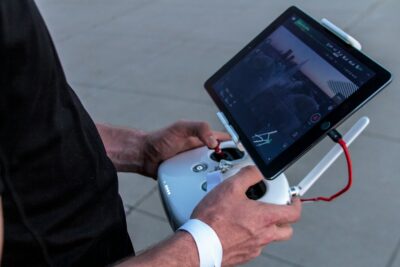Revolutionizing Passenger Experience Through Advanced IFE Systems
The Evolution of In-flight Entertainment Systems
The future of in-flight entertainment is set to revolutionize passenger experiences through further integration with personal devices, wearable technology, and immersive media formats. As technology advances, airlines are exploring innovative ways to enhance the in-flight experience, making it more personalized and engaging. This evolution in IFE systems is driven by the increasing demand for seamless connectivity and high-quality entertainment options.
One of the key trends in the evolution of IFE systems is the integration with personal devices. Passengers today carry a plethora of devices, including smartphones, tablets, and laptops, and they expect these devices to function seamlessly during flights. Airlines are responding by offering wireless streaming services that allow passengers to access a wide range of content directly on their personal devices. This not only provides a more personalized entertainment experience but also reduces the need for bulky seat-back screens, leading to cost savings and lighter aircraft.
Wearable technology is another area that holds significant potential for the future of in-flight entertainment. Devices such as smartwatches, fitness trackers, and augmented reality glasses can offer unique entertainment and productivity options. For instance, passengers can use AR glasses to view immersive movies or play interactive games, transforming the traditional in-flight experience. Additionally, wearable devices can monitor passengers’ health and comfort, providing data that can be used to enhance their overall travel experience.
Immersive Media Formats and Personalization
Immersive media formats, including virtual reality (VR) and augmented reality (AR), are set to play a major role in the future of in-flight entertainment. These technologies can create highly engaging and memorable experiences by transporting passengers to different worlds or providing interactive educational content. For example, VR headsets can offer virtual tours of tourist destinations, allowing passengers to explore potential travel spots before they even land.
Personalization is at the heart of these advancements. By leveraging data analytics and artificial intelligence, airlines can offer content that is tailored to individual passenger preferences. This level of customization enhances passenger satisfaction and loyalty. For instance, AI algorithms can analyze viewing habits and suggest movies, TV shows, or music that align with the passenger’s interests. Furthermore, personalized content can extend beyond entertainment to include tailored advertisements and promotions, increasing the relevance and impact of marketing efforts.
The integration of these advanced technologies requires a robust and flexible IFE system architecture. Airlines must invest in upgrading their infrastructure to support high-bandwidth streaming and low-latency connections. This includes implementing advanced Wi-Fi systems and ensuring compatibility with a wide range of personal devices and wearables. By doing so, airlines can provide a seamless and immersive entertainment experience that meets the evolving expectations of passengers.
Leadership and Management in Advancing IFE Systems
Effective leadership and management are critical in driving the advancement of in-flight entertainment systems. Leaders must foster a culture of innovation and continuous improvement, encouraging teams to explore and adopt new technologies. This involves staying abreast of the latest trends in personal devices, wearable technology, and immersive media formats, and understanding how these can be integrated into the IFE ecosystem.
Executives and managers must also focus on strategic planning and investment. Upgrading IFE systems to support new technologies requires significant financial and resource commitments. Leaders must allocate budgets effectively, prioritize projects that deliver the highest value, and ensure that investments align with the airline’s overall business objectives. By taking a strategic approach, airlines can maximize the return on investment in their IFE systems and enhance the passenger experience.
Collaboration is another key aspect of leadership in this context. Implementing advanced IFE systems requires coordination between various departments, including IT, marketing, and customer service. Leaders must facilitate cross-functional collaboration to ensure that all aspects of the passenger experience are considered. For example, the IT department can provide technical expertise, while the marketing team can offer insights into passenger preferences and behavior. By working together, these teams can develop innovative solutions that drive the success of IFE initiatives.
Project Management in Deploying Advanced IFE Systems
Project management plays a vital role in the successful deployment of advanced in-flight entertainment systems. Effective project managers must oversee the entire process, from initial planning and development to implementation and evaluation. This includes setting clear goals, timelines, and budgets, and ensuring that all stakeholders are aligned and informed throughout the project.
One of the main challenges in deploying advanced IFE systems is managing the complexity of integrating new technologies with existing infrastructure. Project managers must work closely with technology vendors and internal teams to ensure compatibility and smooth implementation. This involves rigorous testing and quality assurance to identify and resolve any issues before the system goes live.
Risk management is another crucial aspect of project management in this context. Potential risks, such as technical glitches or delays, must be anticipated and mitigated. By developing contingency plans and closely monitoring project progress, managers can address any issues promptly and ensure a successful deployment. Additionally, project managers must be adept at handling changes and adaptations, as technology and passenger expectations continue to evolve.
Conclusion: The Future of In-flight Entertainment
The future of in-flight entertainment promises to deliver highly personalized and immersive experiences through the integration of personal devices, wearable technology, and advanced media formats. As airlines embrace these innovations, they can provide passengers with a seamless and engaging travel experience that meets their evolving expectations.
Effective leadership and strategic project management are essential for the successful implementation of these advanced IFE systems. By fostering a culture of innovation, investing in the necessary infrastructure, and encouraging cross-functional collaboration, airlines can stay ahead of the curve and deliver exceptional in-flight entertainment.
The integration of modern technology in IFE systems not only enhances passenger satisfaction but also creates new opportunities for revenue generation through targeted advertising and personalized content. As the industry continues to evolve, airlines that prioritize advanced IFE strategies will undoubtedly lead the way in transforming the passenger experience and achieving business success.
—
#FutureOfIFE #InFlightEntertainment #PersonalDevices #WearableTechnology #ImmersiveMedia #PersonalizedExperiences #ModernTechnology #BusinessSuccess #LeadershipSkills #ProjectManagement























